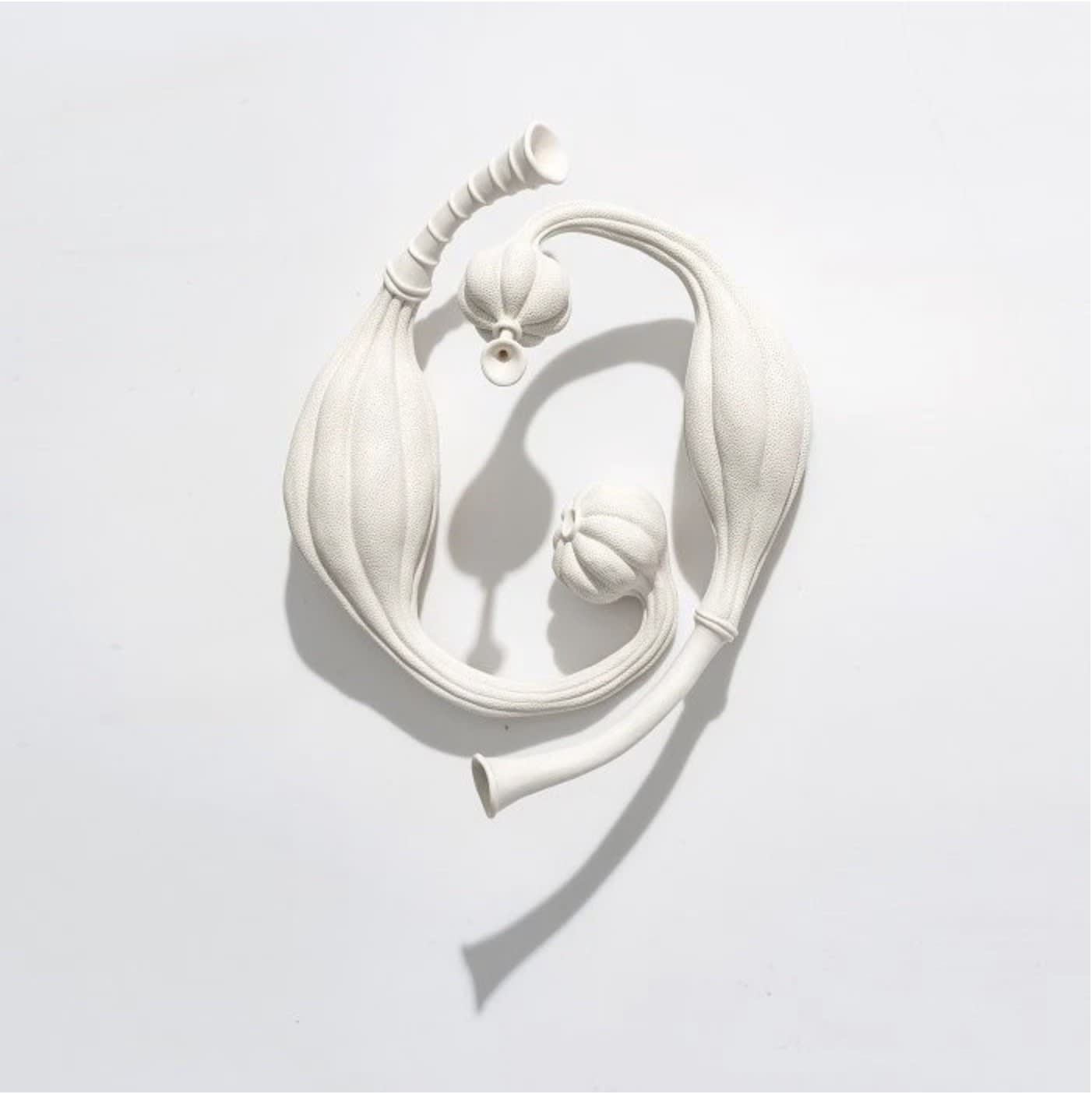In the last years, the ancient material has transcended its traditional functionality and has been elevated to its own form of fine art.
Sarah Rayner, Entwined, 2020, hand carved porcelain, 28 x 28 x 10 cm (2 components). Courtesy of the Artist and Gallery San Dan-Cuthbert
Ceramics are a long-lasting art form seen through most cultures across the world — from the ancient pottery left behind in Rome and Greece to the Palaeolithic Venus of Dolní Věstonice. In Australia today, clay is booming as an art medium, especially during 2020 when a nation in lockdown turned to social-distancing activities. Through this, clay has become a fine art material, pushing designers and craftspeople to test the limits of their practice. A vase or a mug is transformed into a piece of art that can be appreciated every day. Functionality is at compatibility with aesthetics.
The concept of clay within fine art adopts temporality, fragility, durability, and pertains reminders that what we leave behind might remain thousands of years later. These are philosophies that feed into the conceptual approach of many Australian ceramic artists working today. Their crafts are honed by a collective methodology to act minimally and resist the consumerism that drives contemporary design. Instead, their works are at the crux of fine art while connecting their audience by basic design functionality.
Taiwan-born, Melbourne-based Zhu Ohmu uses clay to build her artworks as an antithesis to the destruction of nature. Ohmu makes all her work by hand with each vessel/sculpture taking approximately six weeks — sold exclusively with Gallery Sally Dan-Cuthbert in Sydney. Her work rejects design philosophies driven by demand, but rather by the whims of seasons and ecology, making her one of Australia’s highly sought-after artists.

Zhu Ohmu, Keep the earth clean it’s not Uranus. COVID19’s effect on air quality can be seen from space (stage iv), 2020, glazed ceramic, 32 x 26 x 26 cm. Courtesy of the Artist and Gallery San Dan-Cuthbert
In her series, 植物繕い (Plantsukuroi) (2016), Ohmu responded to concepts within biomimicry – the imitation of models or systems of nature – while also evoking the practice of kintsukuroi (金繕い) – the art of mending broken pottery with gold lacquer. Instead of traditional gold material, the artist inserted plant life into the cracks; as such, the artworks take on living form, evolving throughout time.
Another artist who uses an eco-engaged methodology is Sarah Rayner, also shown with Gallery Sally Dan-Cuthbert. Based on Australia’s east coast in Maleny, Queensland, Rayner’s ceramics completely resist classical notions of clay in their embrace of the fragility in nature. Using the medium of porcelain, Rayner’s artworks appear to be lifted from the ground in highly detailed forms, particularly the cyclic metamorphosis of native plants.
In Sydney, Alana Wilson’s sculptures – inspired by the surrounding ocean and sandstone cliffs – engage both physicality of touch and design functionality, with the clay moulding into her hands or in contrast, a vessel revealing her maker’s mark. “I like that ceramics could be in someone's house or be used and still affect their daily life, but it's not like just a flat painting on the wall,” the artist thoughtfully considers. “When I visited Japan, I was so astounded with how many people appreciated domestic daily life, and there's a whole different appreciation for pieces; art would be sculptures and ceramics, but they would be used every day.”



